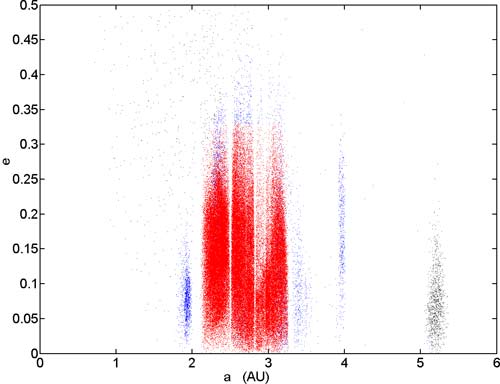Hungaria group

Asteroid groups out to the orbit of Jupiter, showing eccentricity versus semi-major axis. Hungaria asteroids are the leftmost dense grouping in blue.
The Hungaria group is a group of asteroids near the inner edge of the asteroid belt but separated from it by a Kirkwood gap at the 4:1 resonance with Jupiter. The Hungarias, of which about 200 are known, have nearly circular orbits (mean eccentricity 0.08) with semimajor axes of 1.81 to 1.99 astronomical units (AU) and relatively large inclinations of 22° to 24°. Within the group is at least one family – the Hungaria family – believed to have come from the breakup of a single parent body. The prototype of the group, 434 Hungaria, was discovered by Max Wolf in 1898. A few Hungarias have perihelions only slightly further from the Sun than the aphelion of Mars and so are shallow Mars-crossers as well.
| Data for 434 Hungaria | |
|---|---|
| diameter | 11 km |
| spectral class | E |
| semimajor axis | 1.944 AU |
| perihelion | 1.80 AU |
| aphelion | 2.09 AU |
| inclination | 22.5° |
| period | 2.71 years |


